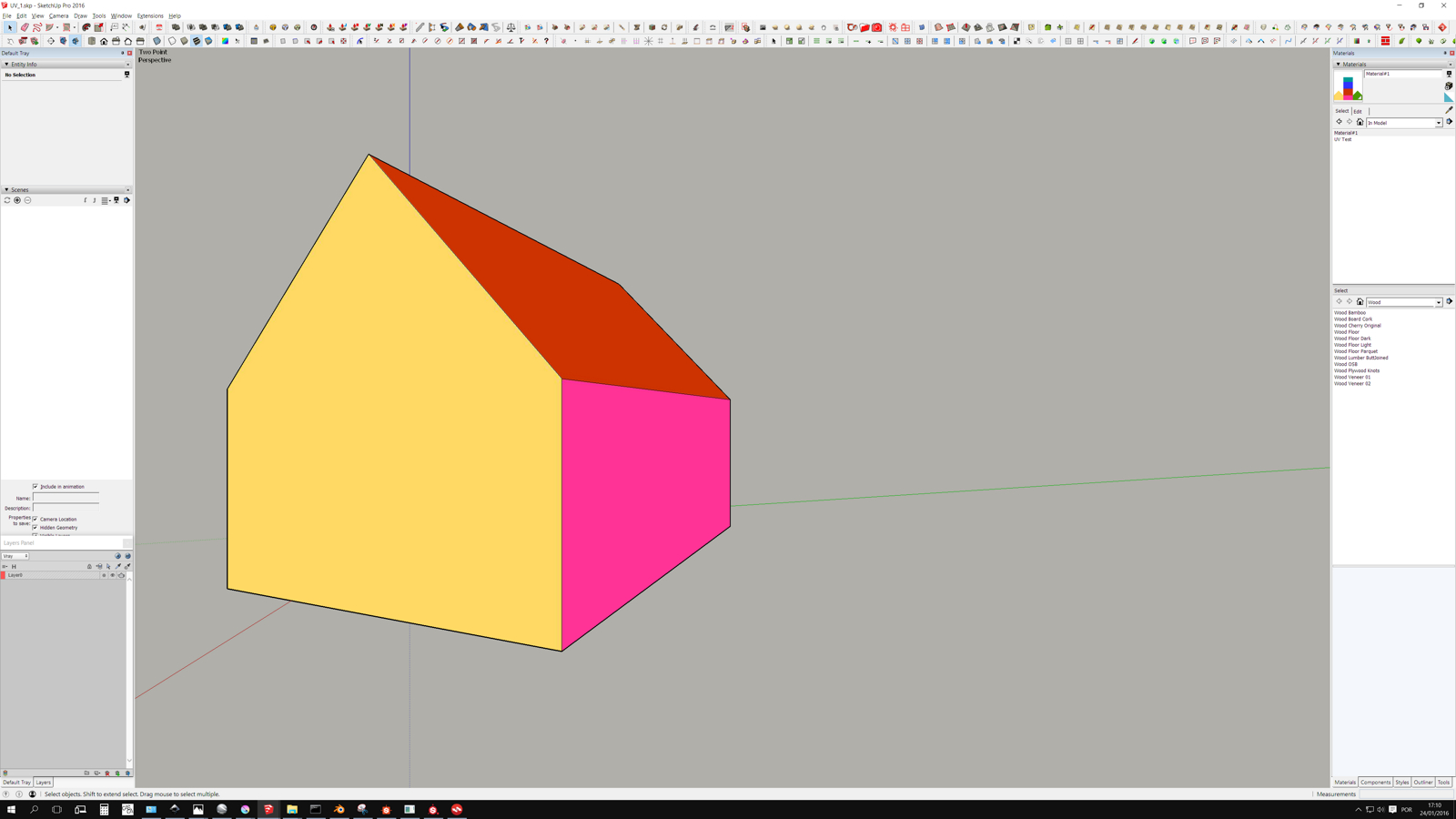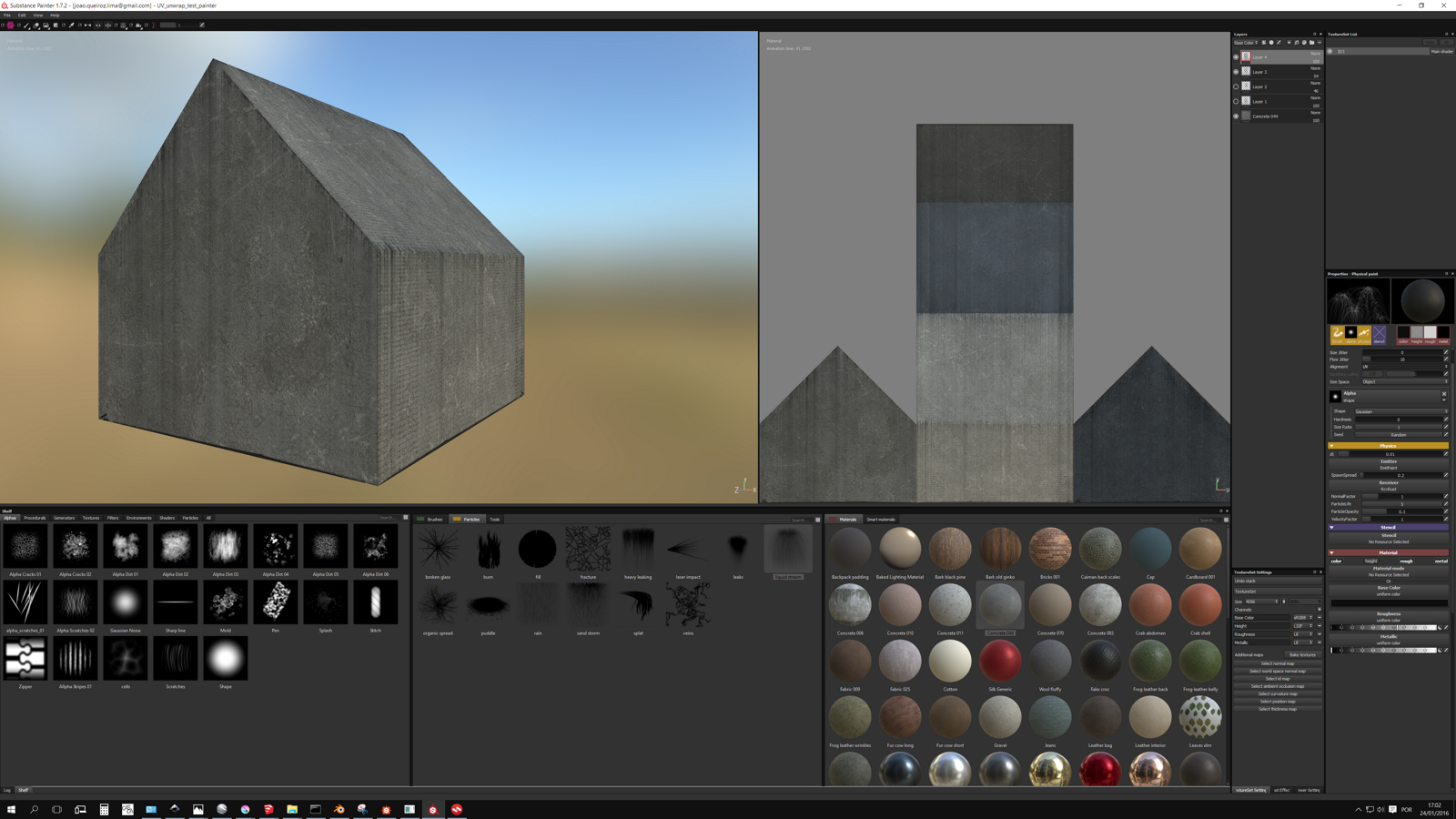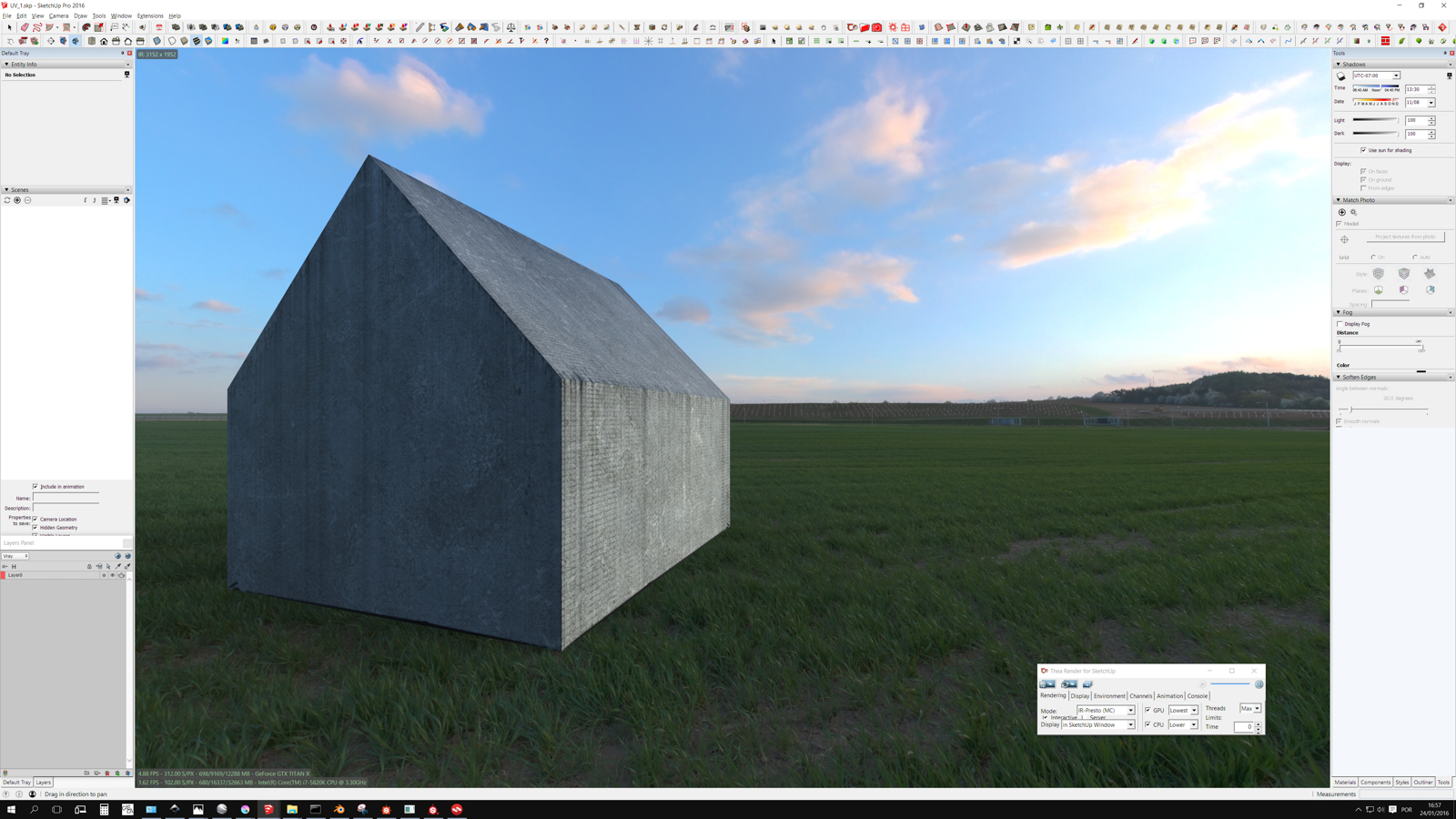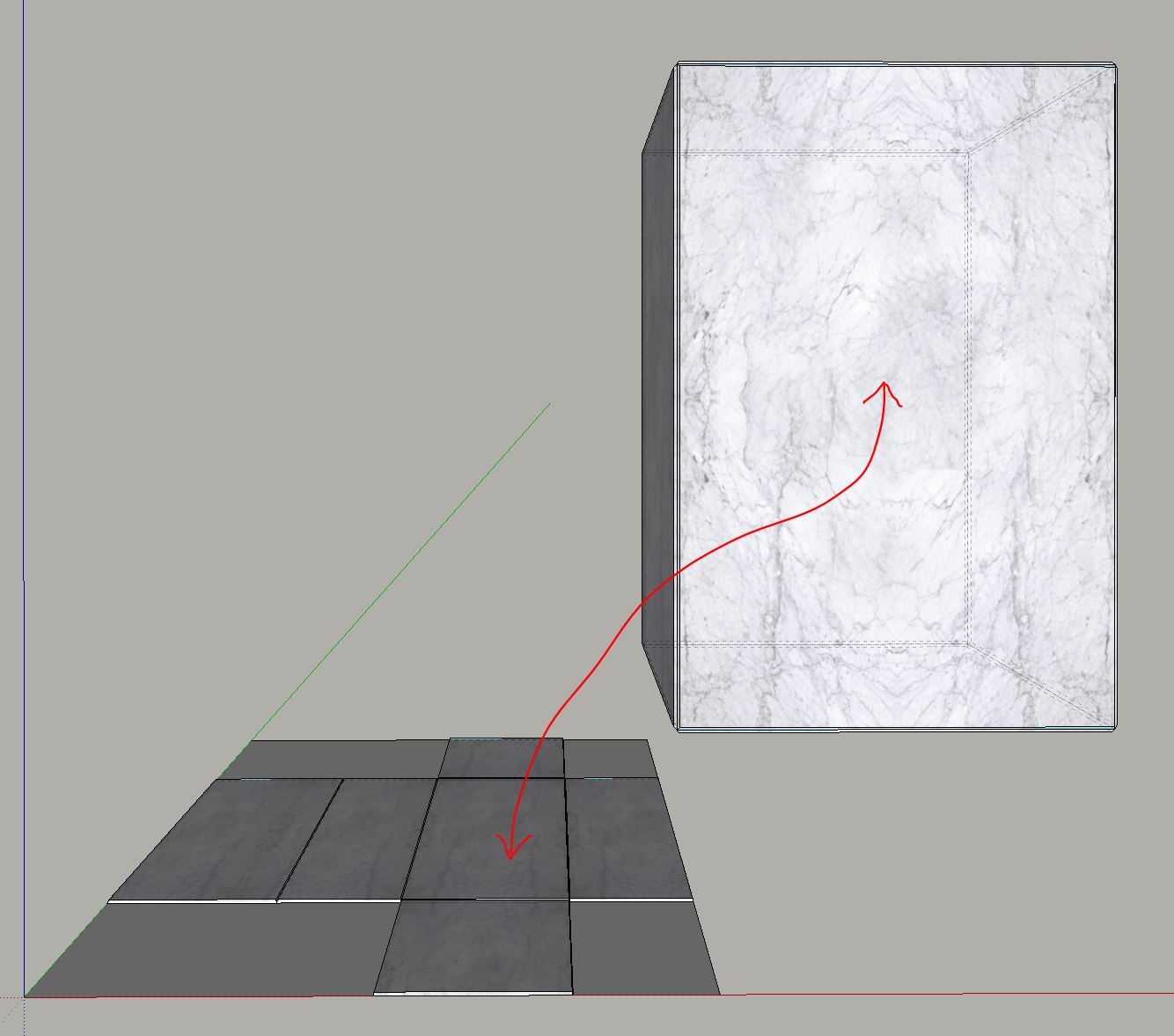Successful UV Unwrap inside Sketchup!
-
And there you go.
A quick trip from Sketchup to Substance Painter and back to Sketchup...



-
I tried another procedure wich relates texture and geometry.
Instead of having Unwrapped faces I've acomplished Unwrapping components.
What this allows is a component face to be edited and when that happens it get's changed in the geometry attached to the 2d map.
You can then scale it rotate it and position it on the map as you will, and then adapt the map to fit the altered component.
Here's a chanfered model created with a projected texture on the 6 components. As I alter the component's shape the texture keeps projected an UV unwrapped. If I alter the component's perimeter, I have to alter the texture afterwards using, redrawing the square, intersecting square face with components and painting the projected texture on the new faces. Then recombine textures and reproject them on component's faces.

I know it's hard to master and convuluted, but it opens up new possibilities.
The plugin I used to Unwrap components is Flattery... it can make all components Unwrap and in that simple box it took only two moves! Only after unwrapping components as faces did I alter the components to be solids with chamfered edges...
Exporting to any format gets a map perfectly unwrapped.
Here's the model to try yourselves:
-
@jql said:
A quick trip from Sketchup to Substance Painter and back to Sketchup...
Care to share a step-by-step guide how you managed to achieve this...?
Looks great...!Have you tried more complex geometry...?
-
@frederik said:
@jql said:
A quick trip from Sketchup to Substance Painter and back to Sketchup...
Care to share a step-by-step guide how you managed to achieve this...?
Looks great...!Have you tried more complex geometry...?
Yes I did, and a VERY VERY improved workflow using components for faces!
This is becoming unbelievably simple.
The Step by Step guide is definetelly on my plans, but I'm getting deeper and deeper on possibilities and tests!
It's amazing what we can achieve using just sketchup if you know how everything is connected, and also, doing the wrong thing it's incredible how everything fails.
Basically let me tell you that Blender seems the devil but it's actually your friend even if you think it's not, while Sketchup looks very friendly and nice, but is a damn liar! All Sketchup want's is for you to be happy but ignorant, while blender shows the world as it is!
When you want to know something important, Sketchup is a father that sits with you at the playground telling you about the birds and the bees and while Blender is the kind of father that talks to you about sex...
Sketchup facilitates things so much that you won't realize what you can achieve by yourself!
-
-
Well... when you take it out of context... It seems really bad!
-
Hello,
I was wondering how you can get thomthom's pseudo-quads to export as quads with fbx or obj files?
I tried all the export options in sketchup; I always get tris in the other 3D softs... -
With QF installed you use the File > Export to export to QF obj.
-
Thanks Rich!
Worked indeed!


Advertisement









